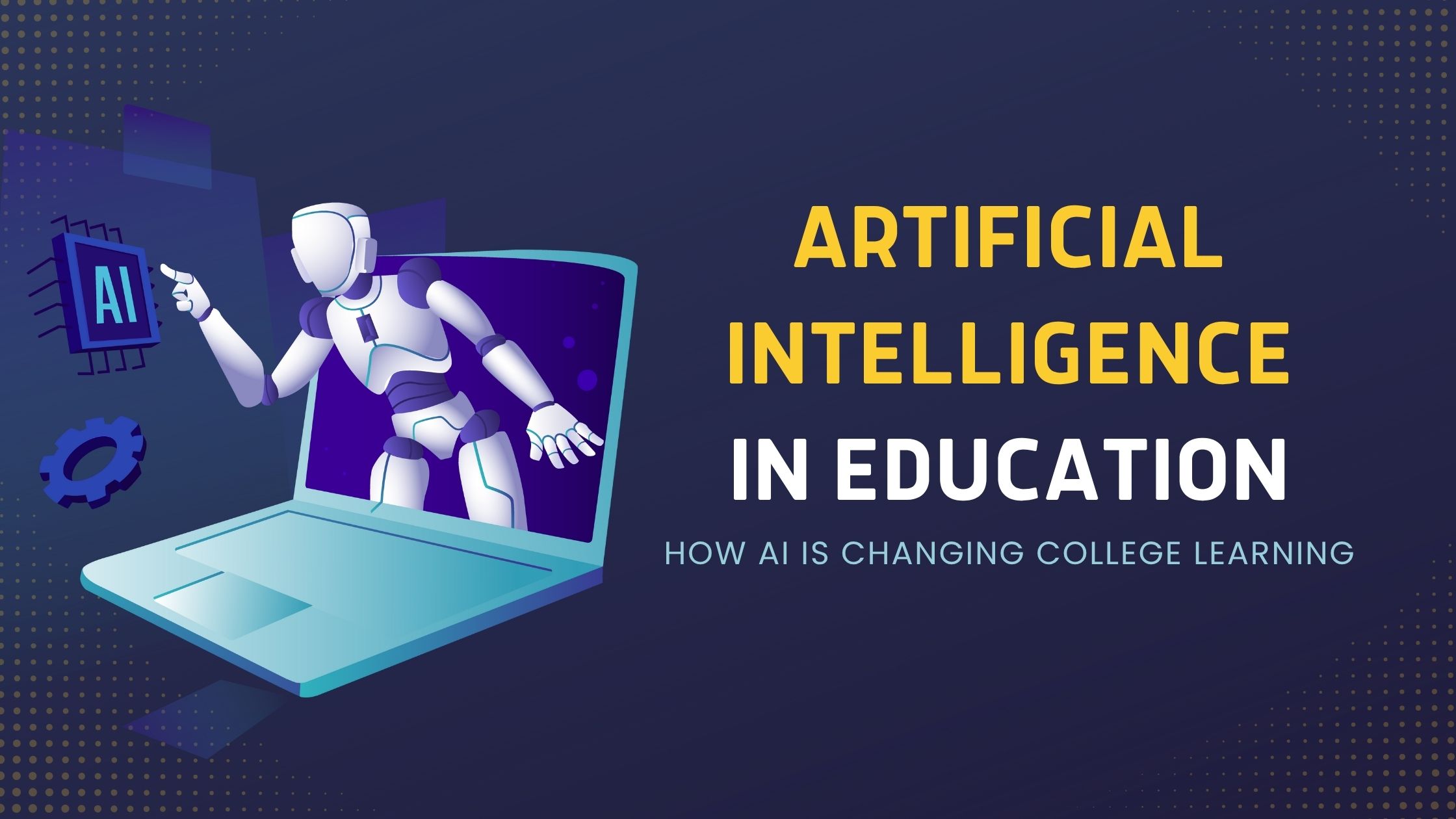Artificial Intelligence in Education: How AI Is Changing College Learning

Artificial Intelligence (AI) is no longer just a topic in science fiction. It has become a real and powerful part of our lives. From smartphones to smart homes, AI is changing the way we live and work. Now, it is also changing how we learn, especially in colleges and universities.
In simple words, AI means machines or software that can think, learn, and make decisions like humans. In the world of education, AI is helping both students and teachers. It is improving learning by making it faster, smarter, and more personal. In this article, we will explore how AI is being used in colleges, its benefits, challenges, and what students need to know to prepare for this change.
The Rise of AI in Education
Over the last few years, AI has become an important tool in education. Colleges around the world are using AI to improve student learning and make teaching easier. Online platforms like Coursera, edX, and Khan Academy use AI to recommend lessons based on what a student knows and what they need to learn.
In India, many colleges and EdTech startups are adopting AI-powered systems. During the COVID-19 pandemic, AI became even more useful. Colleges had to switch to online learning, and AI tools helped students stay engaged, track progress, and get help anytime they needed.
How AI Is Changing College Learning
- Personalized Learning
AI can track how students learn and where they struggle. It then gives them study materials that fit their learning style. This helps students understand topics better and move at their own pace.
- Smart Tutors and Chatbots
AI-powered tutors and chatbots can answer questions anytime, even outside classroom hours. Students don’t have to wait for the next class or email reply to clear their doubts.
- Automated Grading
AI can automatically grade quizzes, MCQs, and even short essays. This saves time for teachers and gives quick feedback to students, helping them improve.
- Virtual Assistants
Some colleges use AI assistants to remind students of deadlines, provide learning tips, or help them navigate online learning platforms.
- Accessibility Support
AI helps students with disabilities. For example, voice-to-text tools, translation tools, and screen readers make learning easier for students with special needs.
Benefits of Using AI in Colleges
- Saves Time
With AI doing repetitive tasks like grading or scheduling, teachers get more time to focus on mentoring and teaching.
- Better Student Performance
Since AI provides personalized learning paths, students understand subjects better and perform well in exams.
- Flexible Learning
AI tools are available 24/7, which means students can learn anytime, from anywhere, at their own speed.
- More Student Engagement
AI tools like learning games, interactive videos, and quizzes make learning more interesting and fun.
- Supports Remote Learning
AI tools are a great help for online or hybrid classrooms. Students from rural areas or with internet issues can still learn effectively.
Challenges of AI in Education
- Data Privacy Issues
AI tools collect a lot of personal data. If this data is not protected properly, it can lead to privacy problems.
- Too Much Technology
Too much reliance on AI may reduce teacher-student interaction. Human connection is still very important in education.
- Cost of Technology
Setting up AI systems can be expensive. Smaller colleges may not afford high-end AI platforms.
- Quality and Accuracy
AI is not perfect. Sometimes, it can give wrong suggestions or feedback, especially in creative or subjective areas.
- Fear of Job Loss
Some educators fear that AI may replace teaching jobs. But experts say that AI should support teachers, not replace them.
Real Examples of AI in Education
Global Examples
- Georgia Tech (USA) used an AI assistant named Jill Watson to answer student questions online. Students didn’t even know it was a machine until the end of the course.
- Coursera and Duolingo use AI to personalize learning paths and adjust lesson difficulty.
Indian Examples
- Byju’s, Toppr, and Embibe use AI to analyze student performance and provide custom lessons.
- IITs and other top colleges are using AI in research and to develop intelligent labs.
Skills Students Should Learn for the AI Era
- Understand AI Basics
Students should learn what AI is, how it works, and how it affects jobs and education.
- Learn Coding and Data Skills
Basic knowledge of Python, data science, and machine learning will be very helpful for future careers.
- Use AI Tools
Students should explore tools like Google AI, ChatGPT, IBM Watson, and Microsoft Azure. Many of them offer free versions for students.
- Ethical Awareness
AI also brings responsibilities. Students must understand data privacy, bias in AI, and the ethical use of technology.
The Future of AI in College Learning
AI in education is growing fast. In the future, we can expect:
- Smart classrooms with AI-enabled boards
- Virtual labs and real-time simulations
- Career guidance using AI based on a student’s strengths
- AI tools helping students pick the right courses, internships, or even job paths
AI will not replace teachers. Instead, it will make them more powerful by giving them better tools to teach and track progress. The future will be a mix of human teaching and machine learning — a smart partnership.
Conclusion
Artificial Intelligence is making college education smarter, faster, and more personalized. It helps both students and teachers by offering tools that improve learning and save time. From smart tutors and automatic grading to virtual classrooms, AI is creating a new era of education.
But we must also be careful. AI should be used responsibly, keeping student privacy and learning quality in mind. It should support teachers, not replace them.
College students must prepare themselves for this change. By learning how AI works and using it the right way, they can take full advantage of its benefits and get ready for a tech-driven future.




